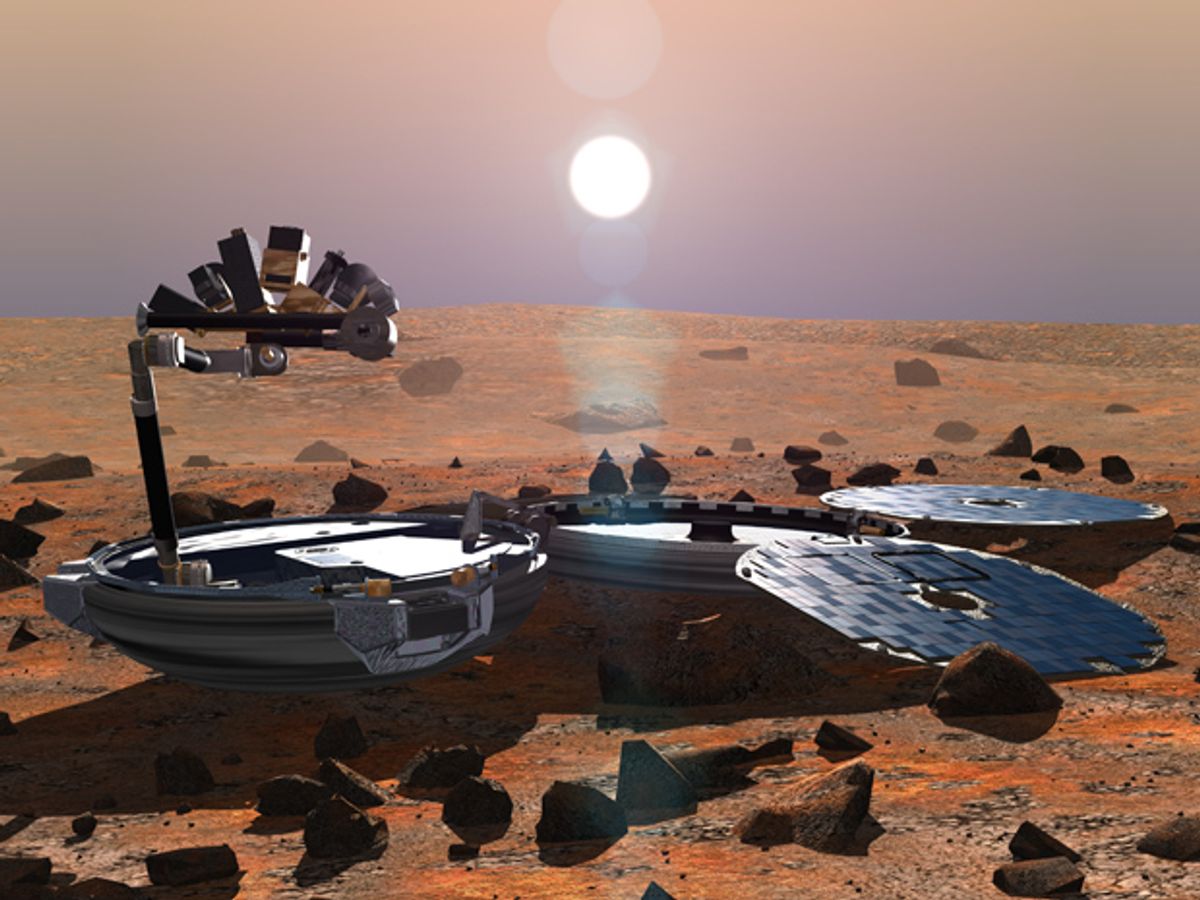A decade-long search for a lost Martian robot has finally discovered the UK-led mission’s fate. The Beagle 2 Mars Lander apparently made it down to the red planet in one piece but failed to fully deploy properly in order to make contact with mission controllers on Earth.
The discovery of the lost robot brings some measure of closure to UK and European Space Agency team members after Beagle 2’s silence following its Christmas Day descent to the red planet in 2003. But the partial deployment of just two or three of Beagle 2’s four solar panels likely blocked the robot’s RF antenna and made it impossible for mission controllers to send a signal to revive the mission remotely.
“To be frank I had all but given up hope of ever knowing what happened to Beagle 2,” said Mark Sims, professor of astrobiology and space instrumentation at the University of Leicester in the UK and former Beagle 2 Mission Manager, in a press release. “The images show that we came so close to achieving the goal of science on Mars.”
Beagle 2 originally traveled to Mars aboard the European Space Agency’s Mars Express mission. The robotic lander detached from Mars Express on Dec. 19, 2003 and descended to the Martian surface on Dec. 25 before it fell silent.
The robotic lander’s size of less than 2 meters wide at full deployment put it right at the limit of detection by cameras and other imaging systems carried by spacecraft orbiting Mars. Searches by Mars Express and NASA’s Mars Odyssey both turned up nothing. But Beagle 2 finally turned up in images taken by NASA’s Mars Reconnaissance Orbiter. (MRO carries the HiRISE camera that represents the highest-resolution camera orbiting Mars.)

"MRO has helped find safe landing sites on Mars for the Curiosity and Phoenix missions and has searched for missing craft to learn what may have gone wrong,” said Richard Zurek, a project scientist for the Mars Reconnaissance Orbiter at NASA’s Jet Propulsion Laboratory, in a press release. “It’s an extremely difficult task, as the craft are small and the search areas are vast. It takes the best camera we have in Mars orbit and work by dedicated individuals to be successful at this.”
An official investigation following the failure of the Beagle 2 mission by the UK government and European Space Agency found that the latter should not have considered the mission a “bolt-on experiment” and should have instead provided proper oversight, according to The New Scientist.
Still, the successful descent and landing of Beagle 2 may provide some consolation for the surviving team members. Several researchers involved with Beagle 2 died just last year, including Collin Pillinger, formerly a professor at Open University and principal investigator of the Beagle 2 mission.
“The highly complex entry, descent and landing sequence seems to have worked perfectly and only during the final phases of deployment did Beagle 2 unfortunately run into problems,” Sims said. “I view it as a great achievement that the team built Beagle 2 in a little over 4 years and successfully landed it on the surface of Mars.”
Any scientific data collected by Beagle 2 remains trapped aboard the lander unless humans can get to it physically. “Maybe archaeologists in a thousand years,” said John Bridges, a planetary scientist at the University of Leicester, in a New Scientist interview. Or perhaps sooner, if Elon Musk and private spaceflight company SpaceX move forward with dreams of sending humans to Mars sometime in the next several decades.
Jeremy Hsu has been working as a science and technology journalist in New York City since 2008. He has written on subjects as diverse as supercomputing and wearable electronics for IEEE Spectrum. When he’s not trying to wrap his head around the latest quantum computing news for Spectrum, he also contributes to a variety of publications such as Scientific American, Discover, Popular Science, and others. He is a graduate of New York University’s Science, Health & Environmental Reporting Program.



